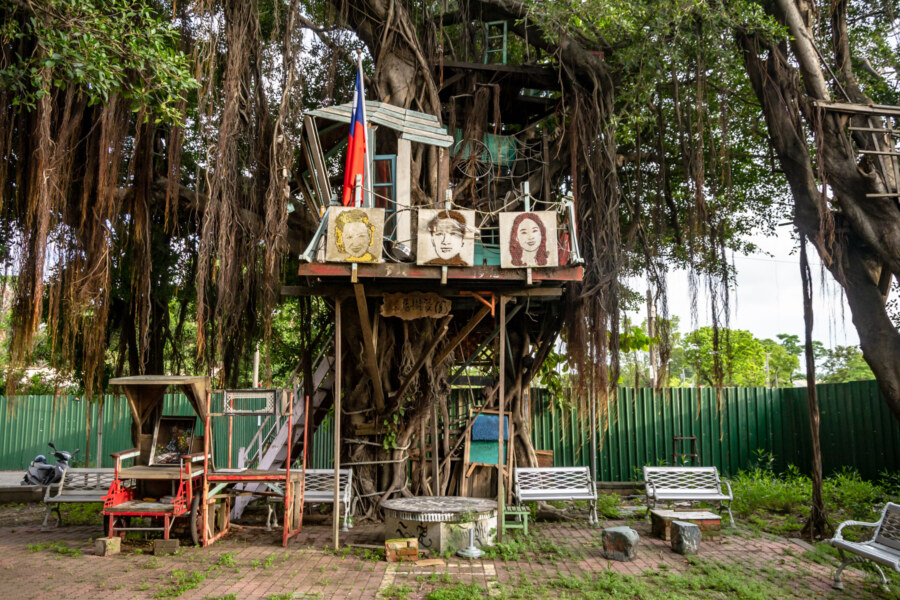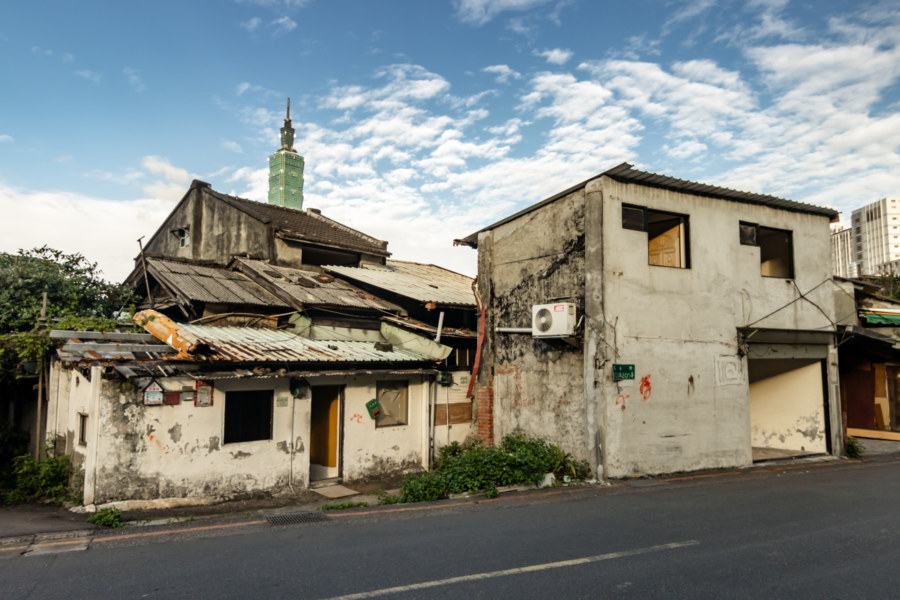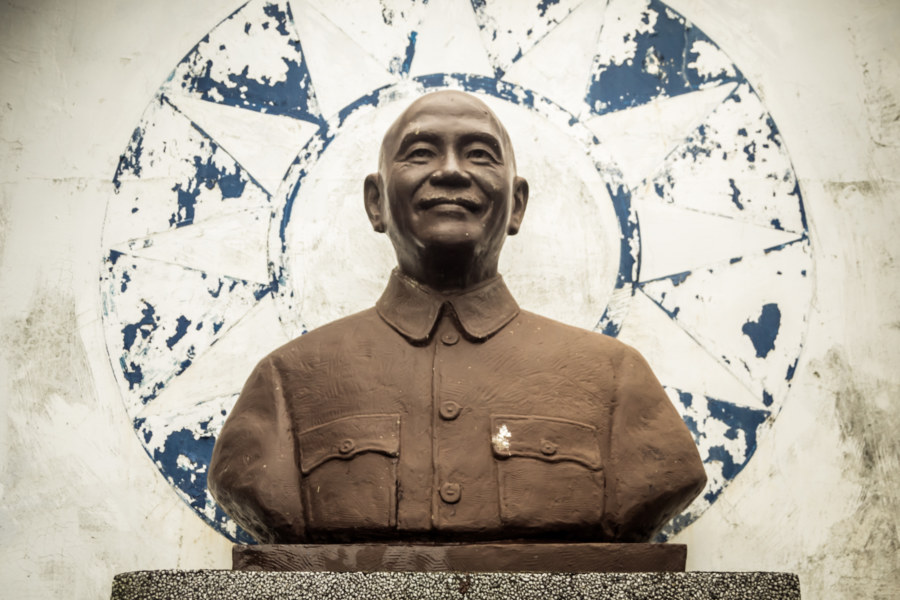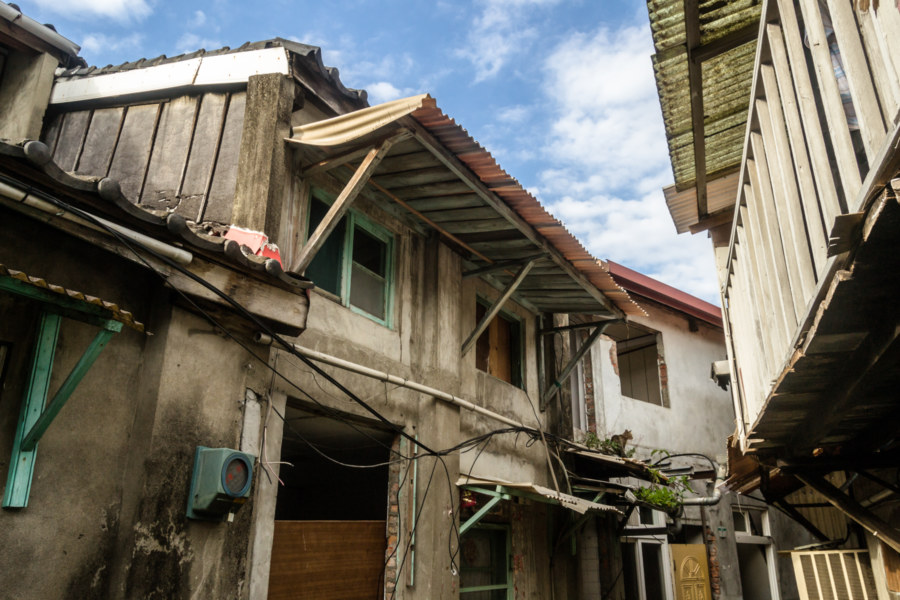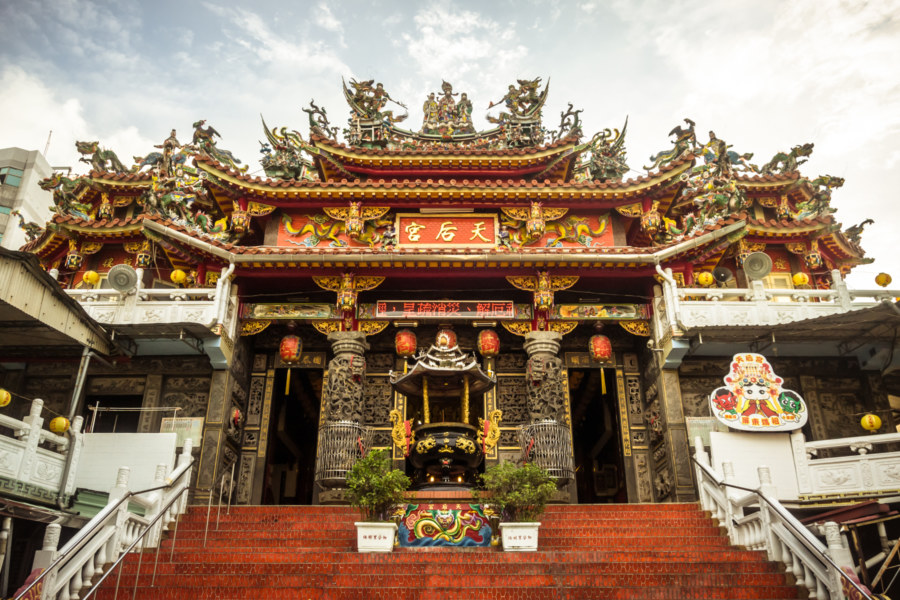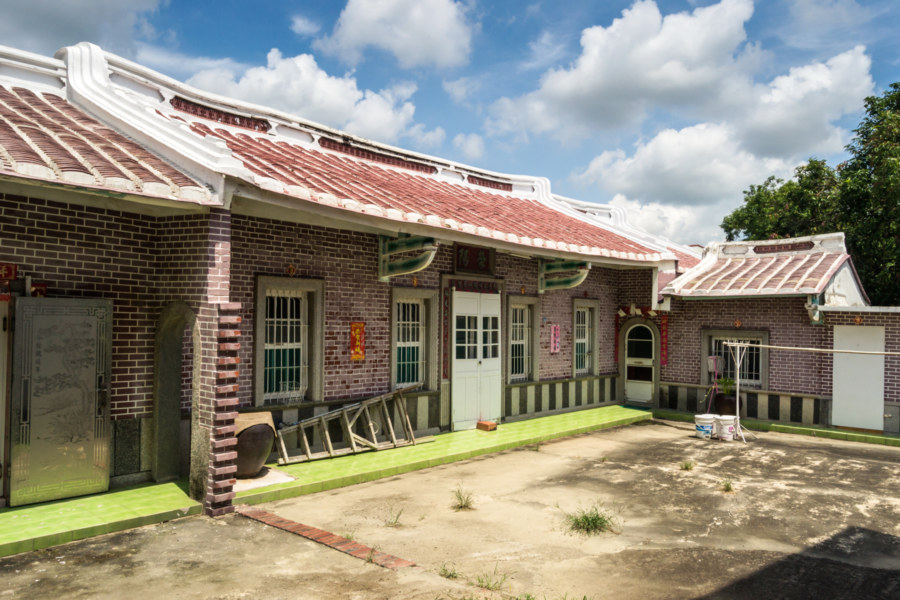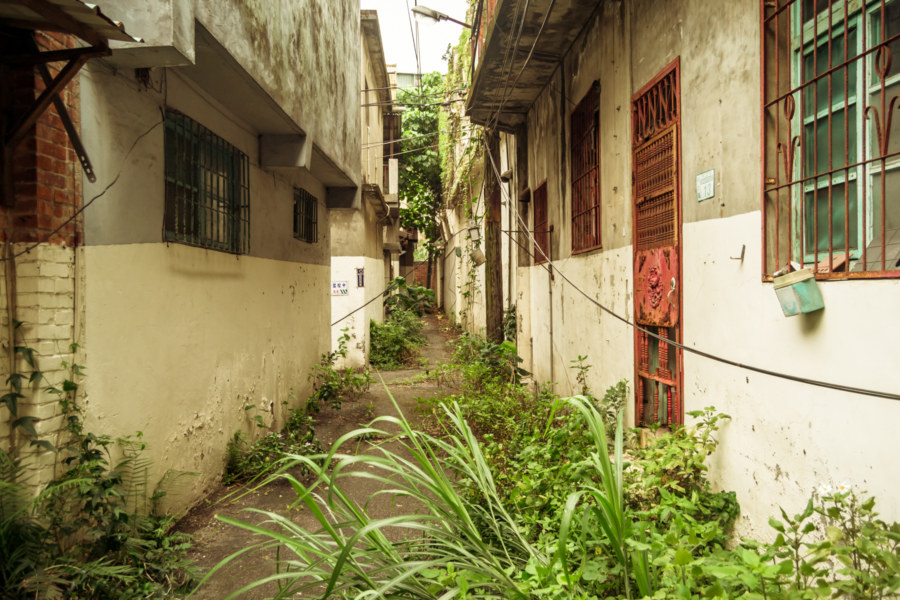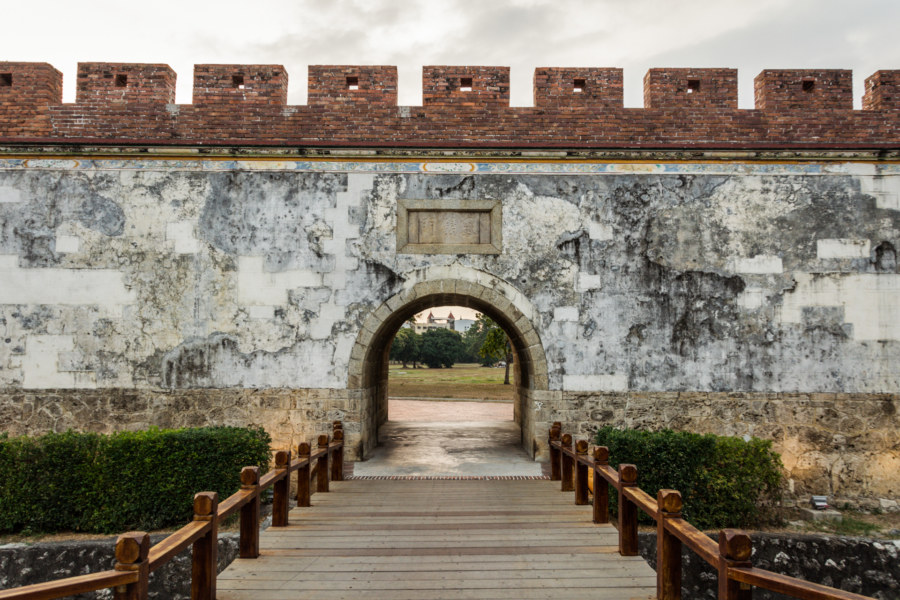The Second Air Force New Village (二空新村) is a former military dependents’ village in Tainan, Taiwan. It was established east of Tainan Airbase in 1950, primarily for members of the Republic of China Air Force and their families, and it eventually grew to become the sixth most populous of the official military villages in Taiwan. From 1950 into the 1960s several waves of construction and development increased the village to nearly 1,000 households, with a sizable number of unregistered structures scattered around the periphery. As with most other military villages this one was steadily dismantled and demolished over the course of many years in the late 2000s and early 2010s, part of a nationwide urban renewal program that relocated the remaining residents into more modern apartment blocks.
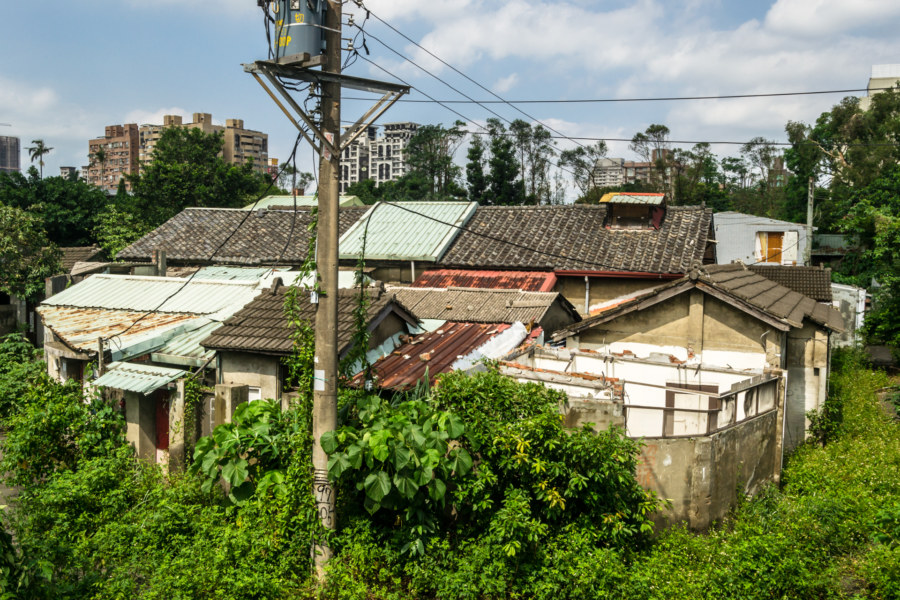
Military dependents' villages (眷村) are a unique feature of the urban and rural landscapes of Taiwan. These villages were developed during the KMT authoritarian era in the 1940s and 1950s to provide provisional housing for KMT soldiers and their families retreating from China and elsewhere. The government has been evicting residents of these villages in recent decades but not everyone wants to leave. Nowadays many of these villages are entirely abandoned (apart from the occasional squatter or hold-out), in an advanced state of decay, or already demolished. For more information read my post about Jiahe New Village.
A Nameless Community in Xinyi District
Xinyi is among the richest and most expensive parts of Taiwan—but it hasn’t always been this way. Decades ago it was sparsely settled and far more industrialized, particularly around Wúxìng Street (吳興街), where I lived for several years in the late 2010s. This part of the city was once anchored by an immense army maintenance depot previously mentioned in this post, but the entire complex was demolished in the early 2010s, replaced by parking lots, basketball courts, and wide open fields. The former depot was surrounded by several military villages, all of which were also dismantled apart from the grim concrete apartment blocks of Wúxìng New Village (吳興新村) and, somewhat further north, the restored and revitalized #44 South Village (四四南村) across from Taipei 101.
Until recently there was also a cluster of what were probably illegal houses on the southern periphery of the former army depot. Nestled into a tiny patch of land next to the mountains and jutting into the factory grounds, this community was demolished in early 2017, but not before I made several visits to document its disappearance. There is nothing particularly noteworthy or unusual about this small community—and indeed, I can find no information about it whatsoever. This post serves only to document a nameless, unremarkable place, one of thousands disappearing into memory all across Taiwan.
Hsinchu Xinyi New Village 新竹信義新村
Pictured here is a bronze bust of generalissimo Chiang Kai-shek in front of the faded emblem of the Kuomintang (KMT) in Xìnyì New Village 信義新村, a military dependents’ village in Hsinchu City. Chiang and the KMT retreated to Taiwan with more than a million Chinese soldiers and their dependents in 1949, bolstering an existing population of seven million Taiwanese. This instantly created a massive housing crisis—all those people needed places to live! The new regime attempted to address this through the development of hundreds of military dependents’ villages, gated enclaves of KMT soldiers and their families, but those were chaotic, desperate, and uncertain times, and many more ended up in informal and often illegal settlements all around Taiwan.
Fushui Village 富水里
Fùshuǐ Village (富水里) is located on a small parcel of land at the southern edge of Zhongzheng, Taipei, just to the west of Gōnggǔan Station (公館站). Technically the village contains the now-abandoned Jiahe New Village (嘉禾新村), a military dependents’ village previously profiled on this blog, but most common uses of the name refer to the illegal settlement running along Yǒngchūn Street (永春街), just inside the riverside wall. This settlement of around a hundred homes, like nearby Treasure Hill (寶藏巖), was supposed to be destroyed around the turn of the millennium, but plans have gone awry, and its fate remains unclear.
Postcards From Pingtung City 屏東市明信片
One of the pleasures of bicycle touring in Taiwan is the freedom to change plans on impulse. On my second day of a trip down south in June 2015, having previously cycled across Kaohsiung from Tainan, I opted to hang out and see more of Pingtung City. A dire weather forecast calling for bouts of torrential rain had already introduced some uncertainty, but I was also curious about this city of 200,000, about which almost nothing is written in English. Finding an interesting place to stay sealed the deal—and so I checked out of a grimy hotel near the train station after breakfast, moved my stuff to the new place, and spent the day exploring the administrative center of Pingtung, the southernmost division of Taiwan.
Southern Taiwan Ride 2015: Tainan to Pingtung City
Bicycle touring is one of the best ways to experience Taiwan. I don’t have an opportunity to go touring as much as I’d like but managed to find some time last year, in June of 2015, to embark upon a multi-day bicycle trip around southern Taiwan. My intention was to cover some of the same territory that I had rushed through on my first bicycle trip down south in 2013. I ended up racing a typhoon from Kenting to Taitung City that year—so the chance to explore the backroads of Pingtung at a more relaxed pace really appealed to me. I started my journey in Tainan, my favourite city in Taiwan, and cycled through Kaohsiung to Pingtung City, putting about 70 kilometers behind me. Gathered here are some photos from the first day of this trip, continued here.
Jiahe New Village 嘉禾新村
Jiahe New Village (嘉禾新村) is one of more than 800 military dependents’ villages (Chinese: juàncūn 眷村) built in Taiwan in the late 1940s and 1950s to provide provisional housing for KMT soldiers and their families fleeing from the Chinese Civil War. Approximately two million people crossed the Taiwan Strait from China from 1945 to 1949, bolstering an existing population of approximately seven million. More than 600,000 of these Chinese immigrants ended up in military villages like this one in Zhongzheng, Taipei, which was forcibly abandoned only a couple of years ago as part of a wave of urban renewal projects sweeping the nation.
Jiangling New Village 江陵新村
Jiānglíng New Village (江陵新村) was one of more than 800 military dependents’ village in Taiwan before its ultimate destruction in mid-2015. It was formerly located not far from the confluence of Jingmei River (景美溪) and Xindian River (新店溪) just outside Taipei city limits in the northern part of Xindian. Immediately to the south is an active military base of some kind—and the historic Jingmei Prison can be found on the opposite side of the nearest major intersection.
The Old Walled City of Zuoying 鳳山縣舊城
A month ago I embarked upon a day trip to Zuoying to check out the famous temples and pagodas of Lotus Pond 蓮池潭, one of the main tourist attractions of greater Kaohsiung. Afterwards I wandered over to have a look at the old city of Zuoying 左營舊城, originally built in 1722 by the ruling Qing Dynasty in response to the many uprisings that regularly plagued Taiwan Prefecture 臺灣府.
